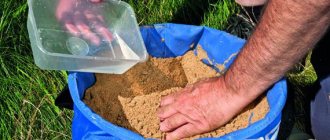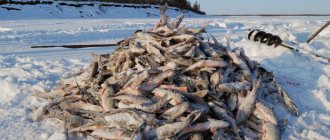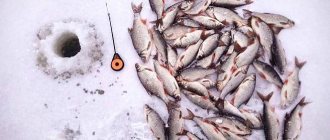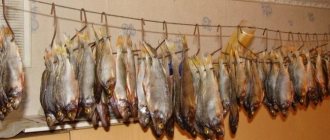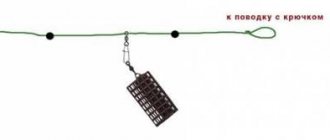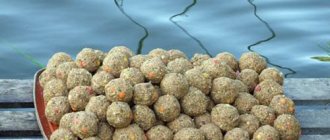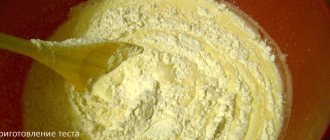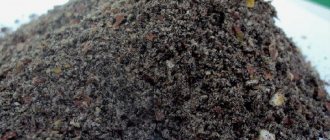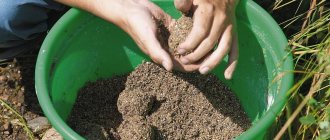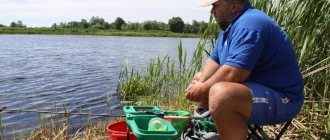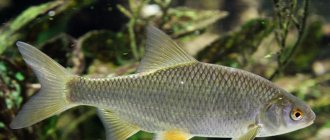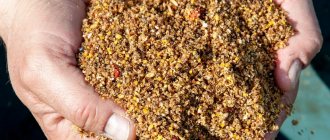Peculiarities of feeding behavior of roach
This is an amazing fish. It can live in any freshwater body of water and is found even in lightly salted seas. Omnivorous and at the same time capricious and selective to bait and groundbait, its food preference depends on:
- on water temperature;
- type of reservoir;
- food supply of the reservoir;
- weather conditions;
- fishing method.
The sorog has special preferences for the tastes, smells and colors of complementary foods. The roach will react only to those components of the bait that excite its receptors, visual perception and resemble its food supply at the moment.
How do wobblers differ from each other?
The simplest bait, which is also considered one of the best, are wobblers. They represent the metal body of a fish. The bodies of fish differ from each other in:
- Shape;
- Size;
- Buoyancy;
- Appearance;
- Game.
It is necessary to take a closer look at the types of wobblers, since wobblers can be catchy only under certain conditions: while fishing for a certain type of predatory fish, on a specific body of water, under certain weather conditions. And in the hands of different fishermen, the same wobbler will show different results.
What to feed the roach - what does the sorog like?
The role of bait/bait (several daily bait) is to attract and retain the school in the desired area, to increase the feeling of hunger in the fish. The ingredients are selected based on the natural seasonal diet of the fish. Retail chains offer a varied range of special compositions for feeding roach, but fishermen more often use their time-tested recipes. Vegetable, protein ingredients and flavorings are used.
Although the roach belongs to the carp family, it feeds not on bottom sediments, but in the water column. Slowly falling particles especially attract her attention, so the bait is finely ground, which does not saturate the fish, but keeps it at the right point due to the bait spot.
Finely dispersed bait holds the fish, but does not saturate it
Advice! In the bait, combine the small fraction with large particles of 1.5 - 2 mm to attract large individuals.
It is this method of feeding that creates a fragrant and appetizing column of turbidity when diving, in which the roach encounters a hook with bait.
Sorogi bait must contain bait/attachment components
The bait must contain bait components. If the fishing is for bloodworms, then the feeding contains live larvae. When a roach is caught on grain, it means grains of grain. In this case, the fish gets used to the taste, smell, visual perception of food and takes the bait more boldly. Products for the mixture:
| Part of the bait | Purpose | Ingredients |
| The basis | Combines other parts of complementary food for delivery to the fishing site | Ground dry biscuits (sweet), breadcrumbs, semolina |
| Aft | Holds and feeds fish at the catch site | Rolled oats flakes, barley, millet, rice, corn grits, sunflower seeds (crushed), peas, peanuts |
| Adhesive components | Binds the ingredients, increases the time the balls disintegrate | Flour: wheat, corn, soybean, oatmeal |
| Flavors | Lures roaches | Vanilla, anise, coriander, hemp, orange |
| Appetite stimulants (flavoring additives) | Holds fish by forcing them to eat | Coconut flakes, sugar, salt, bloodworms, maggots, earthworms |
| Dirty | Creates a cloudy cloud | Powdered milk, baby food, cocoa powder, ground clay |
The grains are steamed in a thermos so that they open up the taste and attract more interest from the fish. This method of preparing porridge causes the grains to stick together less, allowing them to separate from each other. The more diverse the composition, the more time the roach spends at the fishing site, distracted by one and another component.
The fertilizer is mixed in a large container. If the consistency is too viscous, you should add baking powder. Use slaked soda, baking powder or ground cookies. Otherwise, the components will stick together and will not be able to be gradually washed out of the mixture.
Important! A weighting agent (river sand) is added to the bait and feeding for catching roach in the current. The concentration depends on the degree of flow 20 - 30%.
Classification of spinners
Spoons are distinguished by their design, which determines the way they are played. Depending on the behavior of the spoon in the water column, there are:
- Oscillating, or oscillators, which are a metal plate: on one side the spoon is convex, and on the other it is concave. There is a hole in the front to which a hook is attached, usually a tee. Winding rings, which consist of several turns of steel wire, are inserted into the hole. Thanks to these rings, a hinged type of fastening is provided. The oscillators play, swaying from side to side - they oscillate;
- Rotating spoons, or spinners, have a wire axis with a fishing hook. An additional load is sometimes attached to the axle. The metal plate is fixed at only one edge, so a rotational movement occurs in the water around a wire axis. Pinwheels are smaller in size than spoons, so they are used to catch small fish in the form of trout and perch. Good spinning lures show excellent performance even with slow retrieves. When the spinner begins to rotate, some resistance is noted on the handle of the reel;
- Devon is a separate type of spinners, the body of which looks like a pipe, a cigarette, if you like. But in rare cases, the body is flat, and longitudinal through holes can be discerned on it. The body of the spinner is mounted on a wire axis, around which it rotates freely during retrieval. The Devon has blades on the outside that help ensure intense play. As a rule, the blades are located at the front. Anglers most often take Devon for asp fishing.
The spinner has a very complex design: the rotating rod is no more than 5 centimeters in length, which is made of wire with a diameter of 1 or 2 millimeters. The first end of the rod is attached to the leash using a swivel and a winding ring. The metal plate is attached to the rod using a bracket or ring. The attachment point is limited by stoppers in the form of various beads.
An anchor, several hooks or just a tee are attached to the rod. Sometimes the rods do not have a smooth surface: they have grooves and sides that allow the spinner to start spinning earlier than usual. For the same reason, the game is easier when retrieving slowly. The best spinner baits are: “Myran” and “Mepps”.
“Love potion”, or what smell the roach likes
Fishermen have long noticed that fish actively respond to the persistent and rich aroma of bait, which is unusual for the odors of the flora of the reservoir. True, the saturation and its choice depend on the water temperature, and therefore on the time of year. In winter it is better to use unobtrusive subtle scents, and in the spring-summer-autumn season - bright scents.
What smell does roach like? In the warmer months, she loves vanilla. This sweetish-spicy smell, the familiar aroma of buns, stimulates the fish’s appetite and makes the bait attractive. Combines with any brewed cereal. It is better to use vanilla extract rather than vanilla powder, it is bitter.
The next alluring scent is anise. Its fruity trail and sweet and sour taste fascinates fish. Rice or oatmeal with anise makes the bait tempting, stimulates the bait and keeps the roach in the fishing spot for a long time. Retail chains offer a ready-made composition based on anise. This bait is universal and can be used in water of any temperature.
Hemp attracts roaches at any time of the year
Another alluring smell is hemp. The seeds are saturated with essential oils and smell like cut grass. Apparently, the aroma reminds fish of the smell of algae. The seeds are ground and added to porridge, or boiled, kneaded and mixed with complementary feeding ingredients.
Fishermen in reviews often focus on the new product “Secret of the Catch”. They claim that this is a powerful bite activator that attracts even large individuals. It works in both sea waters and fresh water bodies at any temperature, in still water and during currents.
Important! When using any flavoring to catch roach, use moderation. A very strong smell can scare away fish.
Fishermen who are seriously interested in fishing are constantly experimenting, finding their own unique flavor. According to reviews, caraway seeds and dill attract roaches well in late spring, summer and early autumn. In winter, the aroma of cinnamon and orange lifts the sorog from the bottom and lures it to the fishing site. Universal aromas - anise and coriander.
Animal bait
Red dung worm
Worms are, of course, the fisherman's most popular bait. Getting into the water after rains, they are also the most favorite food of fish. Dung worms are very active and are always squirming. In addition, they can secrete a liquid that will attract fish. That is why it is an effective bait. You will have bream, carp, crucian carp, ide, roach, and carp biting. You can find them in compost or manure pits.
Earthworm or earthworm (crawling)
This type of worm is also actively used by fishermen, as it is larger in size than dung worm. Having a length of 35 cm, crawlers are excellent for catching large predatory and omnivorous fish, for example, pike, pike perch, carp, and catfish.
After rain, crawlers can be found right on wet asphalt, or dug out in loose soil (you can even near a pond). You can store worms in a jar with holes for a long time, simply by feeding it.
Meat worm (maggot)
The well-known maggot is a fly larva that infests in stale meat. Feeding on rotting meat, the maggot becomes a fly after 2 weeks. If the temperature drops, the larvae may go to sleep. Therefore, you can store them in the refrigerator for an unlimited time, which is what fishermen use.
Using bottom and float tackle using maggots, you can catch perch, crucian carp, roach, chub, trout, dace, and small pike perch. Maggots can be bought in fishing stores to then be caught. Before fishing, you can add yolk or beets to a jar with them to attract fish.
Chrobak (chafer larva)
Such larvae are also used by fishermen, because they are hard and have a specific smell that attracts fish. Provides an excellent bite, as the chrobaks are very active and move on the hook. The bait can be used at any time of the year.
Caddisfly
Small white worms in a shell resemble butterflies and very often attract fish. They lay larvae that like to live on the bottom and in standing water. Anglers can use either the caddis fly itself or the egg, larva or pupa.
To catch a huge number of cyprinids (perch, barbel, sabrefish, trout, rudd, ide, roach), this bait will be ideal for you. One larva without a shell should be put on the hook. Store in a damp cloth.
Bloodworm
The mosquito larvae that it lays in the pond attract fish very well. The bright ruby body of the bloodworm can attract pike perch, roach, ruffe, roach, crucian carp, and tench. You can fish with bloodworms all year round, but it is better not to use it when fishing with a donk, since the bloodworms are very delicate and fragile.
Experienced fishermen advise storing the larvae in the freezer so that it then holds tightly on a thin hook. String several pieces at a time, as they fly off quickly.
Dragonfly larvae (grandmother)
In the summer, when dragonflies lay eggs, you can find their larvae on aquatic plants or soil. This bait will also very well attract many river fish. You need to insert it so that the head remains intact.
Cancerous cervixes
This bait has a specific taste and smell, which is a huge plus for river inhabitants. After catching crayfish, you will receive the required number of crayfish necks. The fish actively bite on them; the entire carp family cannot resist such bait. You can not only make it yourself, but also purchase it.
May beetle (Khrushchev)
Spring comes and we immediately hear the hum of the cockchafer. You can catch bait on tree leaves, on grass, in general, anywhere there is greenery. Carefully place it on the hook near the front legs so as not to hit important organs. The beetle will move its legs and attract fish, and bring you trophies.
Bark beetle
Beetle larvae live under the bark, but can sometimes be found in hollows, on the bark or near trunks. You can also find bark beetles in dead and damp stumps and trees. The body of the bait is very delicate, so you should carefully put it on the hook.
You can store the bark beetle for 2-3 weeks in a jar in the refrigerator to catch fish such as bream, carp, roach, carp, roach, burbot and others.
Grasshopper
Small green or brownish-green grasshoppers are good bait for fish and are not too difficult to catch in the grass. It will attract both predatory and omnivorous fish. As for baiting, the hook should be threaded just below the head so that the grasshopper continues to jerk in the water.
Dragonfly
As you have noticed, almost any insect is an effective bait for any type of fish. Catching a dragonfly is relatively difficult, but it's worth it: once you hook it, you can attract a lot of fish. The dragonfly's wings will shimmer in the water, which the fish will certainly notice. Place it on the hook carefully, just below the head.
Butterfly
Night moths gather on windows where there is light all summer. Sometimes they get inside, where you can catch it. However, he must remain alive in order to attract fish with his floundering on the hook.
Caterpillars
Caterpillars are capable of secreting various substances that fish immediately sense. So she starts pecking. Experienced fishermen advise placing the leaf in which the caterpillar is wrapped directly on the hook. There will be a lot of bites and you will be satisfied. Caterpillars are a budget-friendly and effective bait option to catch a large predator. The nettle caterpillar is generally a fish favorite.
flies
You can use not only fly larvae in fishing, but also the flies themselves. Adult fatty fish fit perfectly on a hook and lure fish. There are a lot of insects that get into water bodies, which the fish knows, so it will actively rush to your hook.
Lawn
Small shells, lawns, can be found on the shores of various bodies of water. They are so small that the fish can confuse them with a living creature and swallow the hook. The difficulty lies only in carefully placing the fish on the hook, but then you are guaranteed carp, crucian carp, pike perch, trout or bream.
Bivalve
Being soft-bodied baits, such shellfish are real delicacies for fish. They can be found on shallow shores, around rocks or directly on them. Carefully place the clam on the hook and watch how your fishing rod twitches from bites. For example, burbot, bream and carp love this food.
Zywiec
Catfish, carp, pike perch, pike and other predatory fish are caught using live bait. Catch small fish in the same reservoir where you will fish further, and the fish will certainly want to snack on your live bait. Fishing with live bait is generally a very popular and affordable method.
Lard
Not a very popular bait in fishing circles, but specific in its own way. Take unsalted lard and cut it into cubes closer to the beginning of the skin. This type of bait can attract some fish if it is chewed and put on the hook. Its ripples in the water will not leave any fish indifferent, as will its smell.
Taran likes it sweeter...
It turns out that roach has a sweet tooth. Once she tries something sweet, she won’t be able to “pull it away by the ears.” Add to the bait:
- honey;
- sugar;
- soft caramel;
- regular milk chocolate.
She loves banana, coconut flakes, melon. Some people use marmalade as bait. Some fishermen use halva with semolina.
The bait will be catchy and attractive if you saturate it with a sweet component
Do you need salt?
Fishermen have experimentally found that salt stimulates bite regardless of the time of year. Fish, like all living things, need sodium. They need salt to maintain ionic balance and fight parasites. There is very little of it in fresh water, but roach, like other fish, actively responds to the salty taste of the bait and does not leave the fishing spot for a long time.
In winter, salt prevents complementary foods from freezing. Put 100 grams per 1 kg in the bait, in summer - 50 grams. True, there is also a significant disadvantage - it is incompatible with live bait. If fishing is for bloodworms or maggots, they die.
Advice! Replace live bait with food albumin or blood.
The influence of the color of complementary foods
The behavior of the fish depends on the level of water transparency; roach reacts differently to complementary foods. In poor visibility (winter, deep water, cloudy day), roaches are attracted to light-colored particles; in transparent weather (sunny weather, shallow water) - dark ones. True, she reluctantly swims into a bright spot of turbidity in dark water and vice versa, for fear of becoming bait for predators. Light spots of bait balls on the bottom also scare away fish.
To darken bait, fishermen use black soil, rye crackers, and cocoa powder. Milk powder, oatmeal, white clay, and bran lighten the bait. The main thing is that the color does not stand out too much at the bottom of the reservoir.
Typical roach stopping points - essential knowledge for successful fishing
Spinner spinners and spoons: classic will always be appropriate
Despite the huge number of silicone baits and wobblers, many experienced spinners do not exclude classic spinners from their “arsenal”. With this type of tackle you can catch a qualifying trophy in places where “super-fashionable” baits do not produce results. Therefore, their popularity has not decreased over several centuries.
Spoons are divided into three main types:
• rotating;
• fluctuating;
• non-hooking;
• jigs.
Rotating spoons work effectively on almost all types of freshwater predators. Lures of this type can be front or rear loaded. There are also different shapes of petals on rotators. This allows them to fish even deep-water sections of rivers with moderate currents.
Rear-loading turntables are more popular. Their amplitude has a fairly wide range, which attracts even passive fish. Front-loading spinners are often used in jigging. Spinner baits of this type can be used even in the deepest areas.
The pinwheels of the Aglia model have a rounded petal shape and a back one. Some start working at the slightest movement of the spinning rod. They are difficult to use in currents and great depths, since they rise into the upper balls of water by inertia.
For “deep” water, spoons with an oblong narrow petal are suitable. Thanks to this shape, the bait does not rise when rotating. Therefore, it can be fished in almost any conditions.
The main requirement for rotators is uninterrupted operation. Almost all types of spinners of the rotating type have this property. That’s why many novice spinning players start with spinners.
Oscillating spoons are one of the oldest and most effective baits for predatory fish. The narrow body shape with a special bend allows you to fish at almost any depth and even in strong currents.
High-quality spinner spoons are produced by such companies as:
•Mepps;
• Abu Garcia;
• DAM;
• Extreme Fishing;
• Lucky John and others.
The casting distance of the spoon, as well as its working properties, depend on the shape, bend and weight of the spoon. One of the universal models is the Atom.
The oscillators of this modification have the shape of a drop with an expansion towards the hook. Atom spinners are equally effective on:
• closed reservoirs with standing water;
• fast and moderate current;
• great depths.
If the spinner of this model is given a fast, uniform retrieve, it can also be used for fishing in shallow water.
The disadvantage of the oscillators is their increased snagging on snags and vegetation at the bottom of reservoirs. To avoid frequent gear breaks, a spinning angler should buy several models of non-snagging spinners. Lures of this type have wire protection that covers the hook tip when it touches an obstacle. At the same time, hooking a fish on a non-hooking hook is practically no different from hooking on a classic “iron”.
The spinner should carefully monitor the operation of the spinner. If the action of the spinner is constantly disrupted and the fishing horizon often changes, the bait may become uninteresting to the predator. But there are exceptions. It is experiments that can save us from lack of fish. Therefore, you should not refuse to use hardware in places that seem unpromising.
Jigs are also in great demand among anglers. Initially, this type of spinner was developed for vertical fishing for predators at great depths. Over time, the lightest types of bait moved into the arsenal of spinners. The reason for this was the good catchability with classic wiring.
The most popular are the Kastmaster model jigs. With their help you can catch pike, perch and almost all types of white predator.
The best winter bait for roach
Although the fish does not sleep in winter, its behavior is highly dependent on the weather. In cold weather it stands at one point, moves reluctantly and bites weakly, especially in the dead of winter. On thaw days, it actively swims in search of food and stays at the feeding site for a long time. It is also worth considering its unpredictability. The roach can be at the bottom, in mid-water or on the surface.
Feeding balls
Feeding sorog on still water in lakes, reservoirs and bays: tips and recipes
If the fish is at depth, then the bait must be lowered to the bottom. The balls are rolled in clay to make them heavier. A column of turbidity will attract roaches, and the gradual disintegration of the ball will deliver the complementary food to its destination. For starter feeding, 1 ball is enough. They are molded small, the size of a walnut. They lower it a little at a time so as not to feed the fish. When a bite appears, add additional food every 10 - 15 minutes. Usually 300 - 400 g of the mixture is enough for the whole day.
Pour dry food directly into the hole if the fish is near the surface or in the water column. Add periodically throughout fishing. If the bite has weakened, some anglers add a little semolina into the hole. It gradually sinks and attracts fish.
It is better to use several holes at once. Usually, after complementary feeding, the bite begins within 10 minutes. If he doesn’t appear, they move on to the next one and then return.
Reference! To supply complementary food at depth, use a feeder feeder, the “dump truck” type – at half-water.
A dump truck type feeder
“Dump truck” is a cone-shaped device on a fishing line, has holes across the area and an opening bottom. The cavity is filled with bait mixture and closed with a lid. When the length of the fishing line ends, usually 1 - 2 meters to the bottom, with a jerk the bottom opens and the food is released out. The main part falls to the bottom, and some follows the raised feeder, then smoothly lowers, creating an additional train.
Note! An important factor in successful roach fishing is maintaining silence. She is very timid (especially large ones), even when the rod slaps on the water or loudly stomps on the ice, she stops pecking.
There are some requirements for winter bait/baiting of roach in still water. The predominance of animal components over plant ones. These are bloodworms, maggots, dung worms, and bark beetles. Water for kneading is taken from the hole. The consistency of the porridge is medium thick and loose. Bloodworms are added on ice.
Recipe No. 1 based on daphnia
Ingredients (500 grams):
- crust crackers 150 grams;
- sunflower cake 50 grams;
- dried daphnia 50 grams;
- live bloodworm 300 grams;
- cocoa 3 tbsp. l.;
- salt 1 tbsp. l.;
- dry seeds of cumin, anise, coriander.
Grind the crackers with a blender or coffee grinder to a fine fraction. Mix dry ingredients thoroughly. Mash the seasoning seeds. Add water, spices and bloodworms to the mixture on the spot.
Recipe No. 2 - corn based
Components (1 kg):
- rye crackers 300 grams;
- corn beans 250 grams;
- fried ground buckwheat 150 grams;
- dried ground pearl barley 100 grams;
- canned bloodworms 150 ml;
- steamed hemp grains 50 grams;
- salt 10 grams.
Mix all dry parts of the composition thoroughly. At the fishing site, add bloodworms (water if necessary) and hemp grains to the dry mixture and immediately form balls.
Retail chains stock a variety of artificial and natural extracts. BLOODWORM is real bloodworm, only canned, without artificial additives or flavors. The reviews from anglers are excellent. It is especially good in cold water, but the smell is unpleasant, but the fish like it.
Good winter bait for roach:
How and what to feed roaches during the current
They do this - they drill a hole upstream. The distance from the fishing spot depends on the speed of the current and the depth of the reservoir. The balls or feeder are lowered to the bottom so that the current correctly delivers the smell and the food itself to the fishing site. Feeder feeders are used with a small mesh; more often, fishermen use cone-shaped ones. The balls are made the size of an orange. For initial complementary feeding, a few pieces are omitted.
The consistency of complementary foods is viscous. Sticky particles stay in place longer. It must contain large elements. The color is bright so that the fish notice it on the bottom.
Weighting agents are mixed into the bait, approximately 200–300 grams each, so that the food does not carry away too far. River sand, clay, and coastal soil are used.
Recipe No. 3 based on millet
Ingredients:
- millet 400 grams;
- baby food 100 grams;
- small oat flakes or oatmeal 100 grams;
- dried daphnia 50 grams;
- bloodworm 150 grams;
- cocoa 3 tbsp. l.;
- cumin powder ½ tbsp. l, coriander 30 grams.
It is better to make millet-based bait at home - rinse the porridge and steam it in a thermos, let it cool.
Combine all dry parts of the mixture except flavorings. They can be added already on ice, like bloodworms. The composition is moistened to a dense viscous consistency so that the balls stick together easily after several presses. Feeding using a “dump truck” feeder does not require moisture.
Important! If the balls are prepared at home, clean water is used, without impurities.
Purchased mixtures for winter
Many fishermen, taking into account winter conditions, use ready-made dry mixtures, which they purchase in specialized stores.
Dunaev Ice-Premium
“Dunaev Ice-Premium” is considered a catchable bait that is attractive to roaches. The recipe was developed by the famous fisherman-sportsman F. Dunaev. The roach actively bites even during the deep winter. Additional aromatization is not required; soil and bloodworms are allowed.
The manufacturer Greenfishing produces high-quality bait with the scent of sunflower and dill, an even fraction of 100-200 microns with gradual disintegration at the bottom. The gluing of particles and a dark cloud of turbidity is ensured by a mixture of adhesives (at least 2%). There are various colors of complementary foods available, selected from fish preferences: red, red, green, dark brown.
Allvega Formula - attracts roaches and other fish
A series of budget fertilizers Allvega Formula for all types of fishing. The food is rich in proteins. Balanced composition of natural ingredients. The fraction is heterogeneous, which makes the bait interesting for use during currents. The faint scent blends with other scents.
Store-bought complementary foods are used both in dry form and moistened with water from the hole.
You shouldn’t be categorical about ready-made baits if they didn’t work on your first fishing trip. After all, winter fishing is influenced by numerous factors.
Effective bait for roaches: recipes and feeding tips
In summer, there is enough food in the pond for roaches and the heat negatively affects activity and behavior. She pecks lazily, so she also cannot do without baiting. Large individuals live in the depths, small ones come to the coastal thickets. The best time of day for fishing is evening and morning in cloudy weather.
A place baited in advance is the key to a big catch. The diet is dominated by plant components, for example, algae, but it will not refuse grasshopper or caddisfly larvae.
Smells for sorogi are an important aspect when choosing complementary foods
How to make bait for standing water with your own hands
Particular attention is paid to additives and odors. If in winter on frosty days aromas do not diffuse well in water, then in summer this component is indispensable. The brighter the aroma, the more attractive it is to the fish.
Recipe No. 1 with pearl barley and seaweed
Compound:
- crust crackers 150 grams;
- pearl barley 200 grams;
- filament algae 100 grams;
- Sunflower halva 150 grams.
- anise oil ½ tsp;
- animal components: worms, caddisfly larvae, grasshoppers 100 g.
- salt 20 g.
Preparation:
- Pearl barley is fried in a frying pan or dried on a baking sheet in the oven. After cooling, grind it in a meat grinder or blender.
- The crackers are crushed into fine crumbs. They create a cloudy cloud.
- Mix the cereal, crackers, salt with halva, mix thoroughly so that all components are evenly distributed.
- On the shore, cut algae is added, which grows in the water on stones and snags.
- The mass is mixed.
- Worms, larvae or grasshoppers are cut separately.
Mix the porridge with water from the reservoir. If the water is clear, add clay or soil from the shore. Leave for at least 15 minutes. Anise is added. Stir. Roll small dense balls so that they do not fall apart when casting.
The most catchy and attractive bait for roach is a recipe that is especially effective in spring and summer:
Bait for float and feeder fishing
The bait mixture has a loose structure. It is optimal if the ball breaks into the water when cast. The bait breaks up and feeds the fish at the surface, and the sinking components lift the roach from the depths.
Recipe No. 2 vegetable
Compound:
- breadcrumbs 2 kg;
- wheat bran 500 gr;
- corn flour 500 gr;
- sunflower cake 100 g;
- chopped worms 150 gr;
- hemp seed 100 gr;
- coconut flakes 100 gr;
- powdered milk 300 gr;
- sugar 100 gr;
- vanilla.
The cooking method is standard. If liquid flavoring is used, it is diluted in water to moisten the dry mixture.
Bait for roach on the current
The consistency is viscous so that the ball does not immediately wash out. More haze and flavoring components are used. For weighting, coastal soil or clay is required.
Feed balls
Recipe No. 3 for use on warm water
Components:
- ground biscuit or sweet cookies 500 grams;
- breadcrumbs 500 grams;
- bran 500 grams;
- seaweed;
- chopped animal ingredient 100 grams;
- roasted peanuts 200 grams;
- caraway;
- vanilla;
- powdered milk or cocoa.
Mix the dry ingredients with the soil, add, for example, burdock larvae, cut algae from the pond and mix. Moisten until thick. Throw the balls upstream.
Interesting fact! Dry kvass or a mixture of citric acid and tea soda added to complementary foods releases carbon dioxide. It promotes the gradual disintegration of the dense ball at the bottom. Light particles of food also rise with air bubbles, attracting roaches.
The best store-bought baits for roaches in summer
Modern manufacturers use only natural products and flavoring additives in complementary foods. The balanced composition is aimed at maximum attraction of fish, and not at saturation.
Fish Dream
Fish Dream is a special mixture for large roach. The heterogeneous fraction, characteristic aroma and specific taste enhance the zhor and keep the fish in place for a long time.
Dunaev Premium Roach
Dunaev Premium is a universal bait for warm and cold water. The chocolate aroma magically attracts the school to the fishing spot. Small parts of food do not saturate the fish, increasing the bite. To attract large individuals, corn, peas or other components are added.
Pellets Minenko
Pellets Minenko unsweetened corn is a low-fat granulated complementary food with a high content of flavoring and stimulating substances. Especially for large fish. It is used both in pure form and in combination with other components.
What to feed roaches in spring - recipes and cooking tips
With melt water, the diet of reservoirs is replenished with plant seeds, insect larvae, and worms. The roach, hungry during the winter and preparing for spawning, begins to intensively move to the shore and actively feed. During this period, she has a great need for protein, so protein ingredients of the bait are the basis of bait and groundbait for catching roach in the spring. These are legumes, cereals, bloodworms, maggots, worms.
It should be remembered that cold water slows down metabolism, so saturation occurs quickly. A minimum of fillers are used. Starter portions are small, with an emphasis on mild aromas and flavors. The water is dark and turbid due to the flood; a light spot of turbidity will scare the sorrel. Privada is made darkened with bright inclusions, for example, with the addition of white maggots or boiled pearl barley grains.
Spring bait recipe for catching roach
Compound:
- crust crumbs (breadcrumbs) 100 grams;
- pearl barley 300 grams;
- corn flour 100 grams;
- sunflower cake or halva 150 grams;
- milk powder 2 tsp;
- anise or hemp 1 tsp.
Boil the pearl barley and let it swell. Next add dry ingredients and flavoring and mix. Place in an airtight container. After 2 hours the bait is ready. Add maggots at the fishing spot. For use in the current, the bait is mixed with the soil of the bottom of the reservoir or clay.
Recipe for spring bait based on cereals
Components:
- sponge cakes or cookies 150 grams;
- peas or lentils 150 grams;
- canned corn 1 can;
- baby food 3 tbsp. l.;
- worms, bloodworms 50 grams;
- honey or cinnamon 1 tsp.
- reservoir soil.
Peas are fried in a frying pan for 10 minutes. Grind the cakes and peas in a blender. All dry parts are mixed together with corn. On the shore, soil is added from the bottom. Honey is diluted in water from a reservoir. Pour into the mixture, mix with bloodworms.
Purchased mixtures for feeding roaches in spring
Bait catchable roach black
The manufacturer has created a special composition for catching roach in cold water and on pressed reservoirs. The dark color is almost invisible on the bottom, and the fish approaches without fear. It has a neutral roach aroma and combines with other scents.
Cardons 3000
Cardons 3000 is a balanced bait for catching roach in any season. The grind is medium. The viscous consistency is designed for fishing in the current and at a depth of up to 3 meters. Small components slowly separate and float, attracting fish, while heavy ones lie on the bottom. Used as a base or complete complementary food.
What lures, baits and lures to use for fishing in summer
In the summer, there is an abundance of various food in reservoirs and therefore the fish at this time are very picky. The most important condition for successful fishing is the correct choice of bait with which the angler intends to seduce the fish.
The optimal solution is to take as many different fish baits with you to the pond as possible. For example: kneaded dough with milk or protein, dung worms, maggots, steamed grains of oatmeal or barley, corn, and on the banks you can always get various caterpillars, leeches, beetles and mollusks.
When you start fishing, you need to try out all the types of fish baits that you have available. And having decided on what exactly the fish prefers, use the best one on all fishing rods.
It should be noted that fish take moving baits of plant origin more carefully than baits.
A moving bait for fish is always preferable to a stationary one, so you should attach live bait so that it continues to move and move in the water. And you will have “luck in fishing if the bait is in motion.”
In a light breeze, you can use the windage of the line to create the appearance of movement. In calm weather, from time to time the rod should be used to slowly and smoothly pull the bait or move it to the side.
Turbidity in the water always attracts the attention of the fish and it approaches it very willingly. When the water is flowing, you can stir up the water with some kind of stick found on the shore, and in still water you can throw dust, earth or dry clay into the water, this is a kind of bait for fish. You need to fish at the edge of a muddy spot or stream; the turbidity both camouflages the angler and attracts fish.
It happens that a fiasco awaits the fisherman even in a pre-fed and catchable place. This is where you need to show all your ingenuity, activity and observation. You should not leave this place prematurely, but try to replace the fish bait with a smaller one, change the method and depth of fishing.
Leech on a hook
Try treating your fish to a sandwich. For example, try placing a maggot on a hook baited with crayfish or shell meat; if you are fishing with maggot, place a grain of steamed wheat or pearl barley on the hook. You can try adding crushed bark beetles, bloodworms and even ordinary worms to the dough, bread or porridge.
It is also worth checking what is in the stomachs of the fish caught at this place and, based on the contents of the stomachs, finding out what the fish are currently eating. Try different options, fish baits, experiment and your effective number of bites will significantly increase.
Thank you all for your attention!
No tail, no scales, fishermen! Share on social networks:
Autumn bait: what is special?
At the beginning of autumn, when the water has not yet cooled down, the roach has a good appetite. They also provide food on the summer menu.
By mid-October, the bite worsens, the water temperature drops, but it remains clear, so bait for cold water, say, spring bait, is not suitable. We need dark ones so that they don’t stand out at the bottom.
Taste preferences: bloodworms, maggots, dung worms. Rusks are used as a basis. The food supply consists of cereals. The aromas and tastes are unobtrusive and sweet: vanilla, honey, sugar, hemp.
Autumn recipe
Compound:
- dry wheat bread crusts 200 g;
- millet 200 gr;
- maggot and bloodworms 100 gr;
- cocoa 2 tsp;
- vanilla 1 tsp.
Boil or steam well-washed millet in a thermos. Grind the crackers into fine crumbs. Mix everything. Near the pond, cut the living component and combine with the dry mixture. Dilute vanilla in water from the pond and moisten the complementary foods. Knead well. Let it brew for 15 – 20 minutes. When fishing in the current, add clay.
Fishing is a creative and intuitive process that requires knowledge and a special approach. Anglers “look and smell” an area before fishing. Bait recipes for fishing are also individual; the presented options take into account the main proven preferences of roach.
Artificial baits
Summer jig. The jig is a metal body with a hook soldered to it. This fishing tackle can be used either together with baits and attachments, or independently. Jigs can be winter or summer, with the summer jig being larger and more often used for fishing for bream, chub, silver bream, perch, ide, dace, roach, bluegill, rudd and of course crucian carp. Fishing with a jig requires special skill and the use of special gear, but at the same time it is recognized by fishermen as effective and very exciting.
Fly spinner. A spinner is a simple and versatile artificial bait that can be used all season long. At the same time, such a variety as fly bait is quite effective in the summer, since it imitates a rapidly rotating insect. Fly baits are most often caught using spinning rods and fly fishing.
fishing baits
